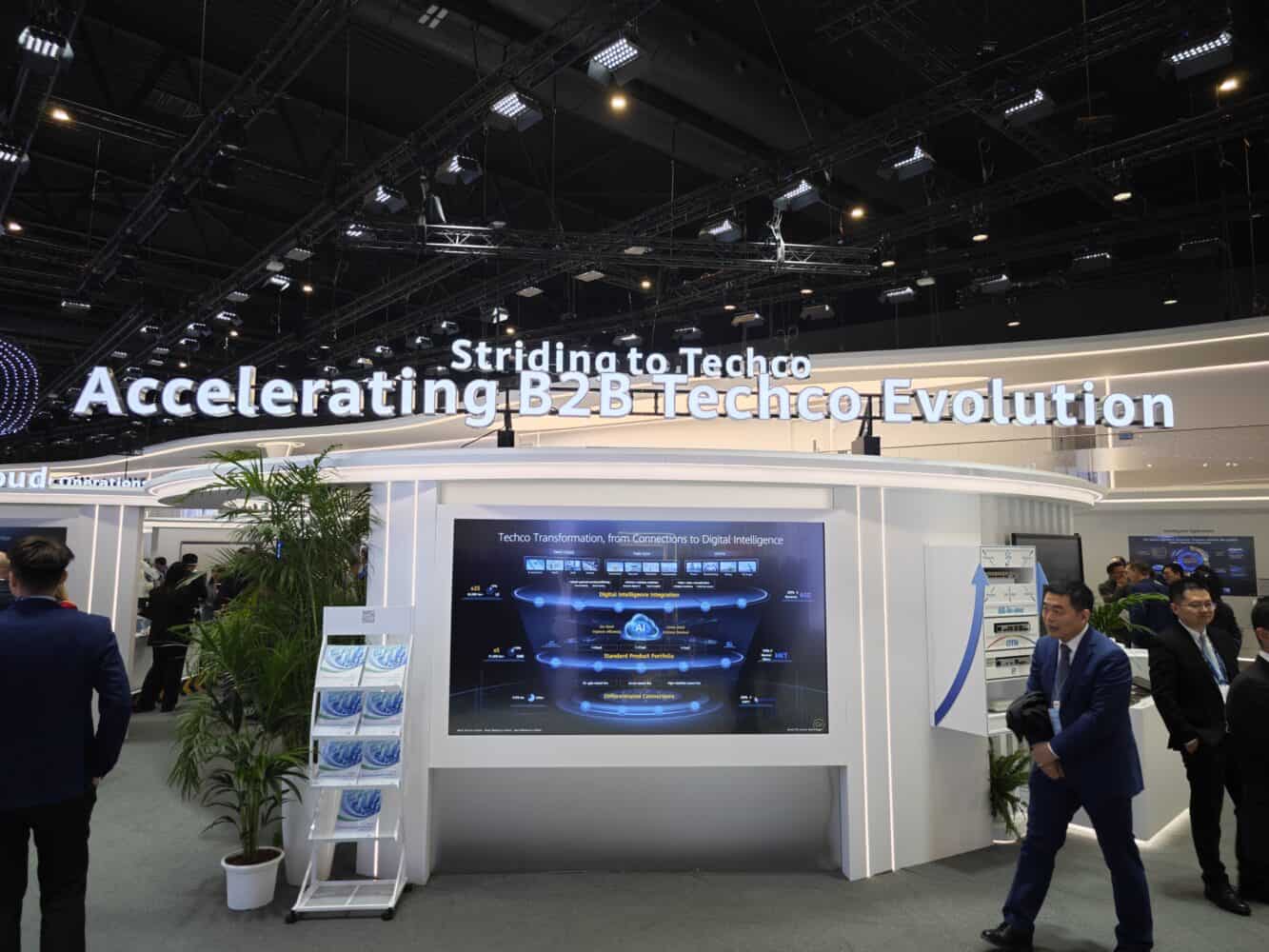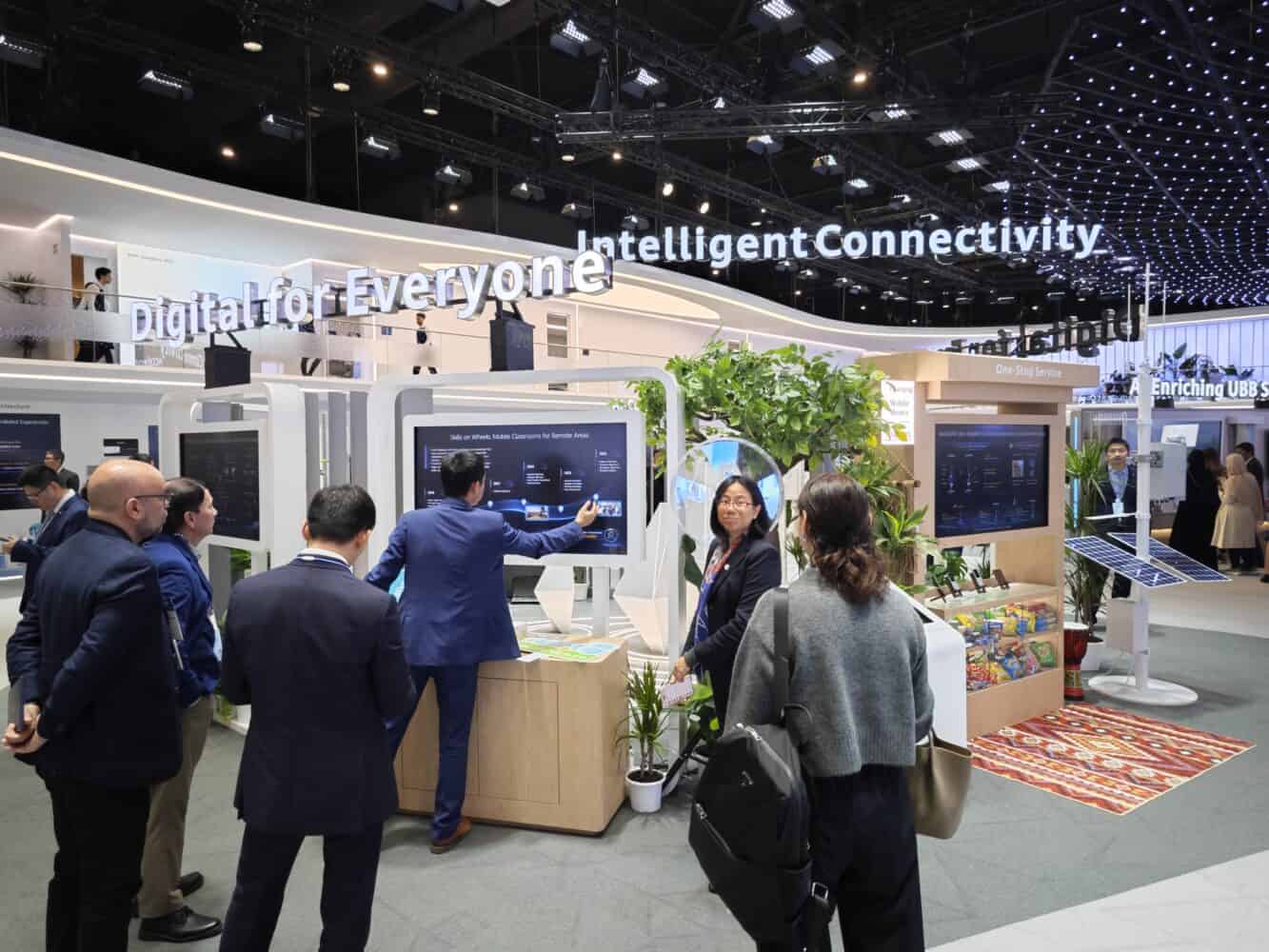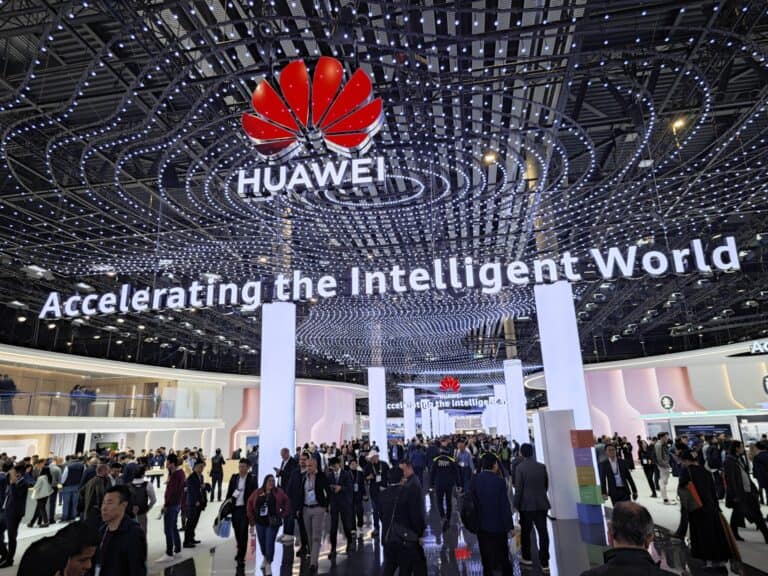Huawei is presenting its vision of the future of telecom networks during Mobile World Congress 2025 in Barcelona. Of course, AI plays a central role. It is the engine for further improvement in network infrastructures. The Chinese company foresees a transition from traditional telecom companies (telcos) to technology companies (techcos) through significant upgrades.
The new network Huawei envisions is also described as the AI-Centric Network. This principle is central to the strategy to modernize network infrastructure. In this model, traditional telecom networks are optimized to meet higher bandwidth, latency and coverage standards. The goal is twofold: on the one hand, the infrastructure is upgraded so that AI applications can be better supported; on the other, it creates space for telecom companies to enter new domains. This upgrade provides the foundation for telcos to develop into full-scale techcos that offer other technologies, such as cloud computing and AI, in addition to connectivity services.
5.5G solutions for mobile AI era
To this end, Huawei is developing new AI-focused 5.5G solutions that should mainly improve the user experience. Traditionally, mobile connections were mainly downlink-centric, but progress in AI is changing this. Interactions are shifting to dynamic interplay between humans and AI and even AI-to-AI communication. A robust infrastructure with higher uplink capacity and lower latency is necessary for these processes to work smoothly.

Second, the new 5.5G solutions must transform network management. To this end, Huawei has the concept of GreenPulse, which addresses the need for more efficient energy use and automation of network operations. The autonomous network (AN) is expected to evolve from Level 3 to Level 4. This automation will make network management less dependent on human intervention, leading to faster and more accurate troubleshooting.
The third change regarding 5.5G is more focused on the economics of network management. Huawei sees a shift from traditional, traffic-based models to multi-factor monetization. This involves not just the amount of data consumed, but the value created through different services. This development offers telecom providers new revenue-generating opportunities.
Cloud and AI integration
Huawei Cloud plays a crucial role in this transition, including for telecom. As far as Huawei is concerned, the cloud has two main ways to help networks move forward. One can be described as AI for Cloud, or enriching existing cloud services with AI functionality. Huawei describes the other as Cloud for AI. That, in turn, focuses on the cloud as a platform for AI applications.
This approach means that cloud solutions are no longer separate from AI technology; rather, both elements are seamlessly integrated. Part of this is the CloudDC solution, which gives telecom companies access to more than 30 Tier 3+ data centers worldwide. This infrastructure allows fault detection and troubleshooting to take place rapidly, contributing to the reliability and speed of services.

Proprietary AI models
In addition to the infrastructure, Huawei also emphasized during Mobile World Congress that it is making work of its AI models, under the name Pangu. These models are already being applied in more than 30 sectors and more than 400 use cases, demonstrating the technology’s broad applicability. At the same time, this requires attention to security aspects. New solutions, such as the Large Model Security Solution and the Cloud Multilayer Ransomware Protection Solution, provide end-to-end security for both large language models and the broader network. These measures are essential to protect data and business processes from cyber attacks.
Future vision for telecom companies
All in all, Huawei sees a future in which the combination of advanced 5G-Advanced technologies and AI offers new opportunities for personalized services and innovative revenue models. According to the company, more than 2.1 billion 5G users will be active worldwide by the end of 2024, underscoring the potential of these technological developments. The focus is on creating intelligent infrastructures that keep up with the growing demand for connectivity but also fulfill the changing needs of users and businesses.
To that end, telecom networks will transform through AI integration and advanced 5.5G solutions, resulting in providers best described as techcos. By investing in an AI-Centric Network and an integrated cloud strategy, Huawei continues to position itself as a major player for telecom in Europe in 2025. The Chinese company has the largest booth in the exchange, showing that it takes our market very seriously. Huawei wants to and can show that it provides a solid foundation for the future of connectivity.
Tip: Huawei aims to win European hearts again with OceanStor Dorado
